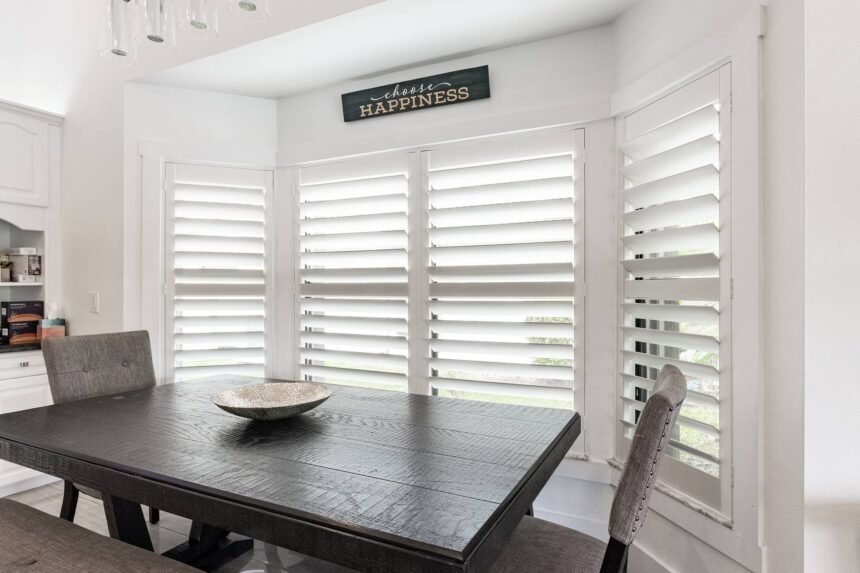Interior shutters have surged in popularity among homeowners seeking elegant, functional window treatments. Their timeless appeal and practical benefits make them an attractive choice for modern homes. However, beneath their polished exterior lies a complex web of costs that extend far beyond the initial price tag. Understanding these hidden expenses helps homeowners make informed decisions and budget appropriately for their shelter investment.
While the upfront cost of interior shutters often surprises first-time buyers, the real financial impact includes professional installation, potential structural modifications, ongoing maintenance, and opportunity costs of choosing shutters over alternatives. Smart homeowners who understand these factors can better navigate the purchasing process and avoid budget surprises.
Beyond the Sticker Price: Installation Complexities
The advertised price of interior shutters rarely tells the complete story. Professional installation typically adds 20-40% to your total project cost, but this expense proves essential for optimal performance and longevity.
Measurement and Fitting Challenges
Most homes feature windows with slight irregularities that require custom adjustments. Even “standard” windows often need shutter modifications to ensure proper fit and operation. Professional installers frequently discover issues like uneven window frames, protruding trim, or non-standard dimensions that demand additional customization work.
These discoveries can trigger change orders that increase costs by hundreds or thousands of dollars, depending on the complexity of required modifications. Windows in older homes present particular challenges, as settling and age-related changes often create alignment issues that standard shutters cannot accommodate.
Structural Modifications and Permits
Some interior shutter installations require structural modifications that homeowners don’t anticipate. Deep-set windows might need frame extensions to accommodate shutter hardware. Homes with unusual architectural features may require custom mounting solutions that involve carpentry work.
Certain jurisdictions require permits for window modifications, even when installing interior shutters. Permit fees, inspection costs, and potential delays add both expense and complexity to projects that homeowners initially viewed as straightforward window treatment installations.
Material Selection Trade-offs and Long-term Costs
Interior shutter materials present homeowners with challenging cost-benefit decisions that impact both immediate expenses and long-term ownership costs.
Wood vs. Composite Performance
Traditional wooden shutters offer unmatched aesthetic appeal but require more maintenance and care than synthetic alternatives. Wood shutters need periodic refinishing, especially in high-humidity environments like bathrooms and kitchens. Refinishing costs can reach $200-400 per window every 5-7 years, depending on local labor rates and finish quality.
Composite shutters cost less upfront and require minimal maintenance, but they lack the premium appearance and customization options of wood. Some composite materials also expand and contract with temperature changes, potentially causing operational issues over time that require professional adjustment or replacement.
Climate Considerations and Durability
Regional climate conditions significantly impact shutter longevity and maintenance requirements. Homes in humid coastal areas face accelerated wear on wooden shutters, while desert climates can cause materials to dry out and crack. These environmental factors affect both immediate material choices and long-term replacement schedules.
High-quality materials that resist climate-related damage cost more initially but often provide better value over time. However, the break-even point for premium materials varies widely based on local conditions and homeowner maintenance habits.
Hidden Maintenance and Repair Expenses
Interior shutters require ongoing care that many homeowners underestimate when making purchasing decisions.
Hardware Longevity Issues
Shutter hardware experiences constant stress from daily operation. Hinges, tilt rods, and louver pins wear out over time, requiring periodic replacement. Quality hardware lasts longer but costs more initially, creating a classic trade-off between upfront investment and long-term reliability.
Motorized shutters introduce additional complexity and potential failure points. While convenient, automated systems require periodic maintenance and eventual replacement of electronic components that can cost thousands of dollars per window.
Professional Cleaning and Adjustment
While basic dusting requires minimal effort, thorough cleaning and periodic adjustments often need professional attention. Shutters installed in high-traffic areas or homes with pets may require professional cleaning services 2-3 times per year to maintain their appearance and functionality.
Professional adjustment services become necessary when shutters develop operational issues like loose louvers, binding hinges, or alignment problems. These services typically cost $150-300 per visit, depending on the complexity of required repairs.
Opportunity Cost Considerations
Choosing interior shutters means forgoing other window treatment options that might provide different benefits or cost structures.
Alternative Window Treatments
High-quality custom blinds or automated shades might provide similar functionality at a lower total cost. While they may lack the prestige and permanence of shutters, alternatives often offer features like remote operation, smart home integration, or easier replacement when design preferences change.
The money invested in premium shutters could alternatively fund other home improvements with a higher return on investment, such as kitchen updates or bathroom renovations that provide greater market appeal and daily utility.
Flexibility and Future Changes
Interior shutters represent permanent installations that limit future decorating flexibility. Homeowners who enjoy changing their décor frequently may find shutters restrictive compared to easily replaceable blinds or curtains.
When selling a home, personal shutter choices might not align with buyer preferences, potentially limiting market appeal despite their quality and cost.
Insurance and Warranty Considerations
Interior shutters present unique insurance and warranty challenges that homeowners should address before installation.
Coverage Limitations
Standard homeowner insurance policies may not fully cover custom shutters under personal property provisions. High-value installations often require additional coverage or specific policy riders that increase annual insurance costs.
Damage from natural disasters, break-ins, or accidents might not receive full coverage, leaving homeowners responsible for expensive repairs or replacements.
Warranty Complexities
Shutter warranties typically cover manufacturing defects but exclude damage from normal wear, improper operation, or environmental factors. Understanding warranty limitations helps homeowners budget for eventual repairs and replacements that fall outside coverage parameters.
Professional installation warranties usually last 1-2 years and cover workmanship issues, but not material failures or damage from external causes.
Making Informed Investment Decisions
Shutters Installation can provide excellent long-term value for homeowners who carefully assess costs, priorities, and expectations. Properly planned and executed installation ensures that shutters not only enhance the aesthetic appeal of your home but also deliver durability and ease of use for years to come. When evaluating this investment, consider your long-term housing plans, maintenance preferences, and budget flexibility: homeowners planning to remain in their current home for many years may find high-quality shutters worthwhile, while those expecting a shorter stay might explore more cost-effective alternatives without compromising style or function.
Research local installation professionals thoroughly and obtain detailed quotes that include all potential additional costs. Understanding the full financial commitment upfront prevents budget surprises and enables better decision-making about materials, features, and installation timing.
Interior shutters represent significant investments that extend far beyond their advertised prices. While they offer undeniable benefits in terms of aesthetics, functionality, and home value, their true cost includes installation complexities, ongoing maintenance, and opportunity costs that smart homeowners consider carefully. By understanding these hidden expenses, you can make informed decisions that align with your budget, lifestyle, and long-term goals.









